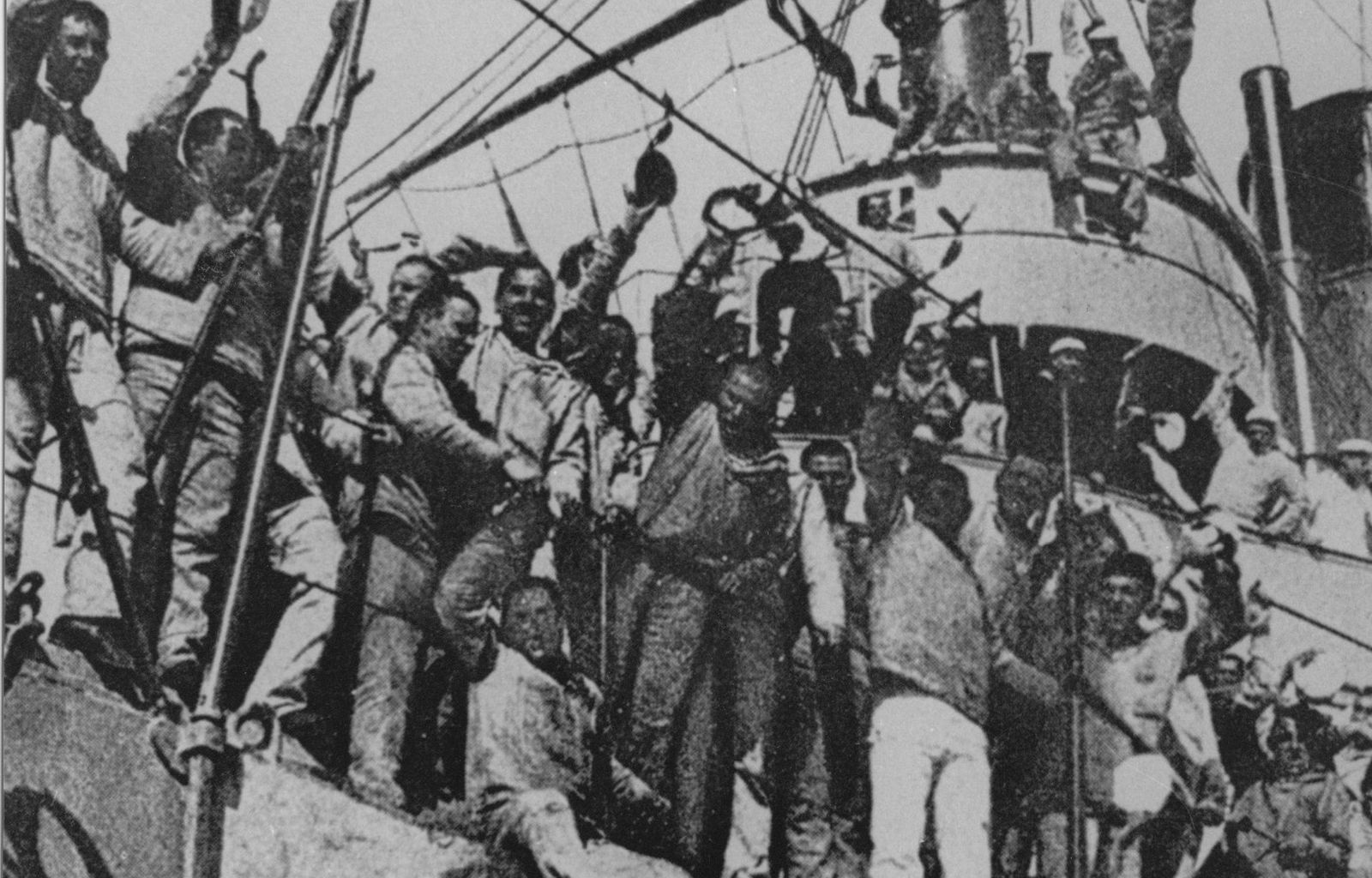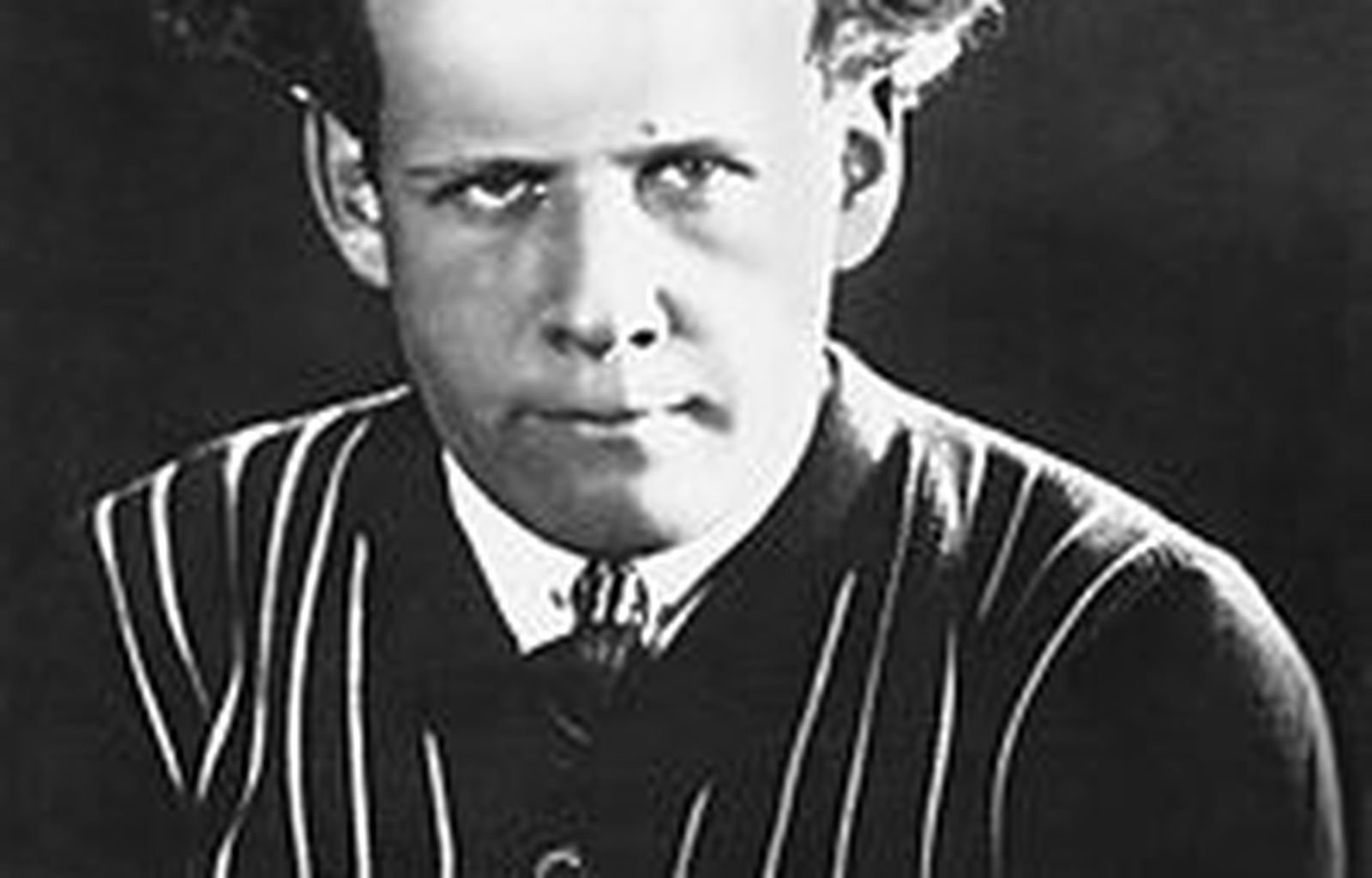The film was shot in twelve weeks. The first scenes were shot in Leningrad in the summer of 1925. However, the crew was very soon forced to leave the city for Odessa because of the onslaught of bad weather. In Odessa Ejzenstejn decided to limit the film to the episode of the revolt of the Potëmkim, an event that occupied a minor place in Agadkhanova's longflowing screenplay. The quarter deck and mutiny scenes were shot on the Twelve Apostles, a twin battleship of the Potëmkin adapted as a mine warehouse and anchored in the port of Sebastopoli. Another ship, the cruiser Komintern, was used for the scene of putrefying meat and for the scenes where a ship on active duty was needed. The final scene of the encounter with the fleet was constructed out of images from old news films. The Odessa steps scene was shot in a week. A dolly track was built along the length of the flights of stairs. Several cameras were used simultaneously for the shots. The lightest camera was tied on the belt of an assistant who moved along the stairs. The film was edited in only eighteen days and was finished just in time for the premiere at the Bolshoi Theater, which ended with an enthusiastic reception. Nevertheless, the Soviet authorities opposed the distribution of the film. The triumph of the screening at the Apollo Theater in Berlin, accompanied by the music of Edmund Meisel, made echoes all around the world. By 1927 Bronenosec Potëmkin had been screened in eighteen European countries, in Japan, and in the United States (the copy was carried back by Douglas Fairbanks who saw the film in Moscow). In Paris the film was presented for the first time by the "Ciné-Club de France" at the Cinema Artistic. The private screening provoked heated debates and the film was prohibited from the public by the censor (and stayed prohibited until 1953) and could only circulate in private film clubs. During the war the negative was lost during the evacuation of Moscow Subsequently, another negative was found in Berlin and was used for the making of the sound version of the film that circulated beginning in the 1950's.
Biography
film director

Sergej M. Ejzenstejn
Cast
& Credits
Soggetto e sceneggiatura: Nina Agadzhanova e S. M. Ejzenstejn.
Director of photography: Eduard Tissé.
Aiuto regia: Grigori Aleksandrov.
Art director: V. Rachals.
Cast: A. Antonov (Vaculincuk), Vladimir Barskij (cap. Kolikov), G. Aleksandrov (com. Giliarovskij), Michail Gomarov (un marinaio), A. Levsin (un guardiamarina), Repnikova (la donna sulla scalinata), Marusov (un ufficiale), I. Bobrov, A. Fajt, attori del teatro Proletkul't, La Flotta del Mar Nero, la popolazione di Odessa.
Production company: Goskino.Copia restaurata e conservata presso il Münchner Filmmuseum.


